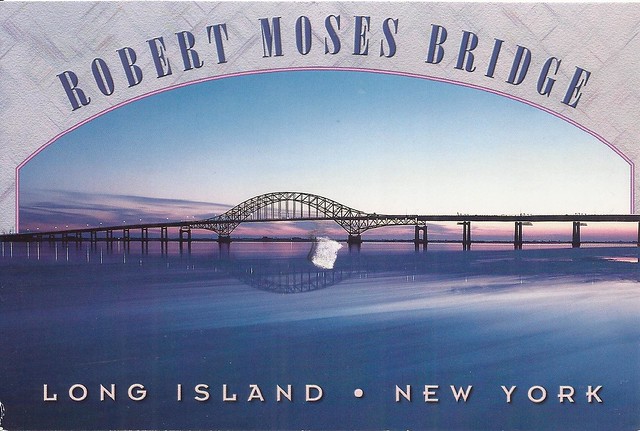The main purpose of this article was to point out a physical aspect of segregation and discrimination. This physical aspect that was focused on was architecture. Even though segregation ended, architecture was used as another way to mask the secret wants of a separated population. In this article, Schindler explores 5 parts of architectural exclusion: the theory, the practice, the brief history of exclusion by law, the architectural exclusion in the court, and the problems and solutions.
One example used to prove the main point of the argument was the bridge building in New York by Robert Moses. His way of keeping segregation was through building low-hanging overpasses. One in particular that he built was a bridge that leads to Jones Beach, which was purposely built low so that public transportation, such as buses, could not pass. The fact that buses could not pass through meant that people who relied on them, specifically poor people and people of color, could not go to Jones Beach.
Another example used in the article was the use of highways. In Palo Alto, a highway was built that separated the upper-class West Palo Alto from the low-income East Palo Alto. This highway made it difficult for pedestrians to travel from one side to the other and made it difficult for cars to turn left. This highway had a high rate of car and pedestrian accidents and because of the lack of safety, it made it more difficult for people to access the area.
Schindler pointed out many of the physical aspects of architectural exclusion but she also pointed out the aspects of legal exclusion. She goes on the talk about how forms of architectural exclusion are overlooked by law makers. She points out how racial zoning, racially restrictive covenants, and exclusionary zoning were laws that were used manipulatively to gain the desired outcome of keeping out undesirable people out of certain locations. Social norms were also used to further the exclusion. In legal exclusion, legal tools are used to exclude people and in architectural exclusion physical aspects of the built environment are used.
In Schindler’s opinion, there are two reasons why it is hard to find architectural exclusion illegal. “The first is the failure of courts, legislatures, and citizens to recognize that architecture regulates…The second is that, even if challengers and decision makers come around to understanding the idea of architecture as regulation, our existing jurisprudence is insufficient to invalidate288 this form of exclusion.289” (Schindler, 1991) She goes on to further explain and give examples of architectural exclusion that are overlooked.
In the ending of the article, the problems and solution are discussed. Even though some problems of the built environment are considered “legacy problems”, there is not much that can be done about some of the architectural exclusion. Some laws were repealed when it comes to exclusion by law, but it had not effect on the architect built while those laws were still in place. Not much can be changed about the past but Schindler feels that if awareness can be brought to the general public, a change can be made for the future and eventually architectural exclusion can come to an end.

